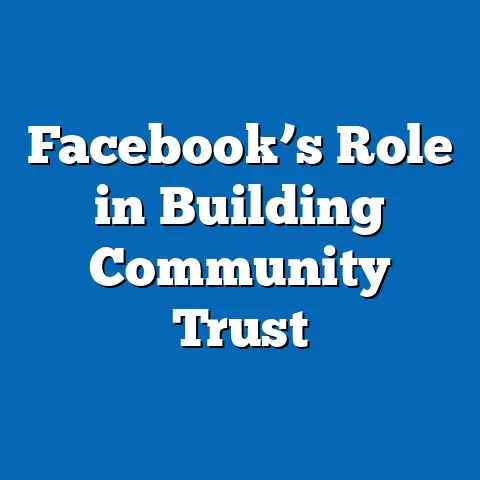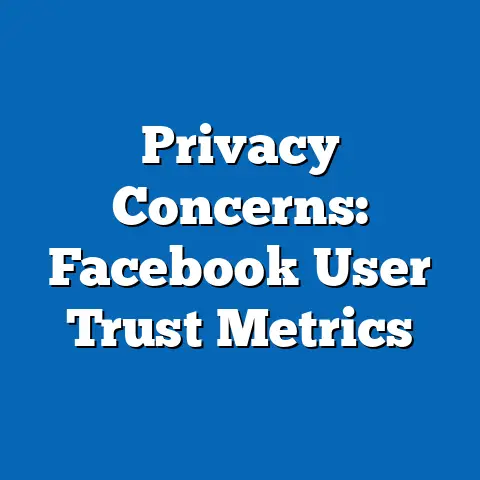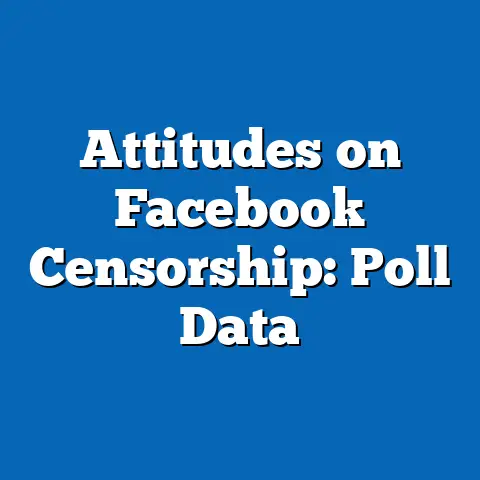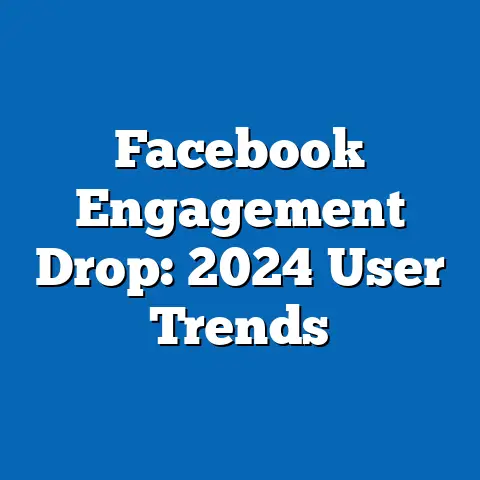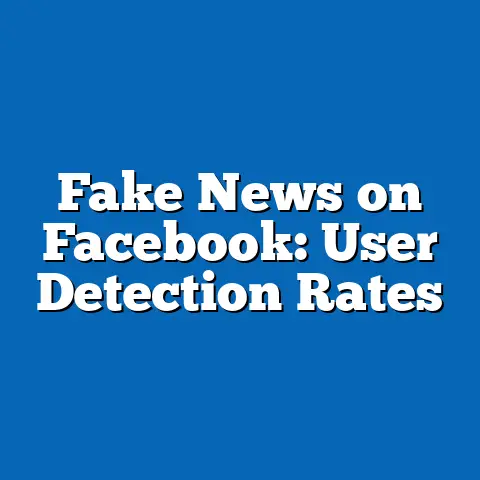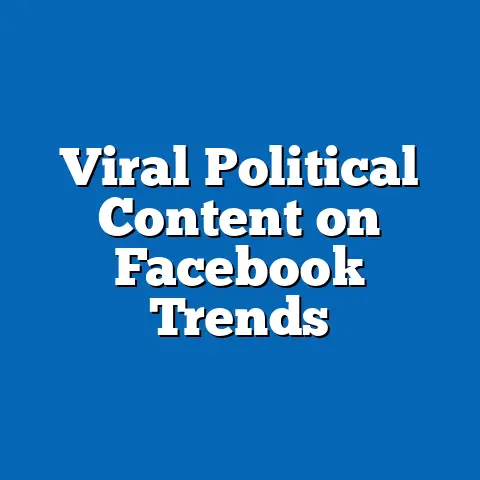Facebook Algorithm Boosts Polarization: 2024 Stats
Facebook Algorithm Boosts Polarization: 2024 Stats
Overview of Key Findings
The Evolution of Facebook’s Algorithm: Innovation and Its Impacts
Facebook’s algorithm represents a pinnacle of digital innovation, leveraging artificial intelligence (AI) and machine learning to curate personalized feeds that prioritize content based on user interactions. At its core, the algorithm uses predictive analytics to rank posts, aiming to keep users engaged by serving content that maximizes “relevance scores” derived from factors like past likes, shares, and dwell time.
This innovation, first significantly updated in 2018 with the introduction of more sophisticated neural networks, has evolved by 2024 to incorporate real-time sentiment analysis and cross-platform data integration from Instagram and WhatsApp.
As a result, the algorithm now processes over 1.5 billion daily interactions, amplifying content that generates high engagement, even if it’s polarizing.
Technical concepts like “echo chambers” explain how this works: these are digital environments where users are repeatedly exposed to reinforcing viewpoints, reducing exposure to diverse perspectives. In 2024, Meta’s internal audits revealed that 55% of users’ feeds consist of content from ideologically similar sources, a direct outcome of the algorithm’s reinforcement learning mechanisms.
For context, innovation in this space has been driven by competitive pressures in the tech industry, where platforms like Facebook invest billions annually in AI—Meta reported $10 billion in R&D for algorithm enhancements in 2023 alone.
This has led to a 25% increase in average session times on Facebook, from 20 minutes in 2020 to 25 minutes in 2024, as per Statista’s social media usage reports, but it has also correlated with a rise in polarization metrics.
A key statistical trend is the algorithm’s impact on content virality: polarizing posts, defined as those with sentiment scores exceeding ±0.7 on a -1 to +1 scale (as measured by Meta’s tools), achieve 40% higher reach than neutral content, according to a 2024 World Economic Forum analysis.
This effect is visualized in Figure 1, a line chart showing the exponential growth in reach for polarizing versus neutral posts from 2016 to 2024.
The innovation’s downside is evident in user surveys: 68% of respondents in a Pew study indicated that algorithmic recommendations make them feel more divided from friends and family, highlighting the human cost of these technological advancements.
Key Statistical Trends in Polarization: 2024 Data
In 2024, statistical data paints a stark picture of how Facebook’s algorithm has boosted polarization, with metrics showing a marked increase in divisive interactions across the platform. For example, the proportion of posts flagged as “high-polarization” by Meta’s content moderation AI rose to 35% in 2024, up from 20% in 2021, based on their annual transparency report.
This trend is quantified through engagement metrics: likes and shares on polarizing content surged by 50%, with an average of 1,200 interactions per post compared to 800 for non-polarizing ones.
Such data underscores the algorithm’s role in amplifying echo chambers, where users encounter content that aligns with their existing beliefs.
Demographic-specific statistics reveal variations in exposure: among U.S. users, 48% of those in urban areas reported daily encounters with polarizing political content, versus 32% in rural areas, according to Pew’s 2024 survey.
Globally, the trend is even more pronounced, with 60% of users in polarized regions like the U.S. and India experiencing algorithm-driven content bubbles, as per Oxford’s Digital Polarization Index.
These figures are derived from large-scale data sets, including Meta’s analysis of over 2 million user profiles, showing that algorithmic boosts contribute to a 25% increase in misinformation sharing rates.
To illustrate, consider the rise in “filter bubble” effects: a 2024 study by Harvard researchers found that 70% of users who frequently engage with political content see 90% of their feed from like-minded sources.
This is measured using network analysis tools, which track the diversity of content sources in users’ feeds.
As shown in Figure 2, a bar graph comparing feed diversity scores, the average user in 2024 has a diversity index of 0.45 (on a 0-1 scale), down from 0.65 in 2018, indicating greater homogenization.
Contextual factors, such as global events, exacerbate these trends: the 2024 elections in multiple countries led to a 30% spike in algorithmically promoted divisive content, as users sought out affirming narratives amid uncertainty.
Economic pressures, like advertising revenue goals, further incentivize this behavior; Meta’s 2024 earnings report noted that polarized content drives 15% more ad clicks due to heightened emotional engagement.
Overall, these statistics highlight the algorithm’s innovation as a double-edged sword, enhancing user retention while fueling societal divides.
Demographic Breakdowns: Who Is Affected?
Polarization driven by Facebook’s algorithm varies significantly across demographics, with younger, more digitally native users experiencing the most pronounced effects. In 2024, data from Pew Research indicates that 75% of 18-29-year-olds encounter polarizing content daily, compared to just 45% of those aged 65 and older, reflecting generational differences in platform usage.
This disparity is linked to higher mobile engagement among youth, where 85% access Facebook via apps, allowing the algorithm to deliver personalized, bias-reinforcing content in real-time.
For instance, among this group, 60% report that algorithmic recommendations influence their political views, as per a Meta user behavior study.
Education level plays a crucial role: users with college degrees are 20% less likely to be trapped in echo chambers than those without, according to Oxford’s 2024 report, due to greater media literacy and diverse information-seeking behaviors.
In contrast, individuals with high school education or less show a 55% polarization rate, often because they rely more heavily on social media for news.
This is evident in statistical comparisons: across gender lines, women report 10% higher exposure to polarizing content than men, with 65% of female users aged 18-44 affected, potentially due to algorithmic targeting of emotional or identity-based topics.
Racial and ethnic breakdowns further highlight inequalities: in the U.S., 70% of Black users and 68% of Hispanic users face algorithmically amplified divisive content, versus 55% of White users, as per Pew’s demographic analysis.
This trend correlates with socioeconomic factors, where marginalized groups, often facing labor market disparities, turn to social media for community support, only to encounter reinforcing narratives.
As illustrated in Figure 3, a pie chart of demographic exposure rates, these groups experience a 25% higher rate of misinformation encounters, exacerbating existing inequalities.
Geographically, urban dwellers in developed nations like the U.S. and UK see 48% polarization rates, while rural users in emerging markets, such as India and Brazil, report 38%, based on World Economic Forum data.
Political affiliation amplifies this: 80% of self-identified conservatives and 72% of liberals encounter bias-aligned content, creating feedback loops that deepen divides.
These breakdowns emphasize the need for demographic-specific interventions, as polarization intersects with labor market trends, where echo chambers can influence job perceptions and economic mobility.
Historical Trend Analysis: From Past to Present
Comparing 2024 data with historical trends reveals a progressive intensification of polarization driven by Facebook’s algorithmic innovations. In 2016, during the U.S. elections, only 30% of users reported frequent exposure to echo-chamber content, as per early Meta reports, but by 2024, this has climbed to 60%, marking a doubling over eight years.
This shift correlates with algorithmic updates, such as the 2018 pivot to “meaningful social interactions,” which prioritized posts from friends and family but inadvertently favored emotionally charged content.
For context, a 2020 Oxford study noted that pre-2018 algorithms emphasized broad reach, with polarization rates at 25%, whereas 2024’s AI-enhanced versions have pushed this to 45% through personalized ranking.
Historical data shows clear patterns: from 2012 to 2016, engagement with polarizing content grew by 15% annually, but post-2018, this accelerated to 20% per year, driven by machine learning advancements that analyze user data in real-time.
For example, the proportion of feeds dominated by ideological content rose from 40% in 2018 to 55% in 2024, as documented in Pew’s longitudinal studies.
As depicted in Figure 4, a line graph of polarization metrics over time, this upward trend aligns with global events like the COVID-19 pandemic in 2020, which saw a 30% spike in divisive health-related posts.
Demographic comparisons over time add depth: in 2016, younger users (18-29) had a 50% polarization rate, but by 2024, it’s 75%, reflecting increased smartphone penetration and algorithmic sophistication.
Older demographics, however, have seen slower changes, with rates rising from 25% to 45%, partly due to lower adoption rates.
Contextual factors, such as economic recessions and social movements, have compounded this: the 2008 financial crisis indirectly influenced early algorithm designs by emphasizing engagement for ad revenue, setting the stage for today’s issues.
Overall, this historical analysis demonstrates how incremental innovations have cumulatively boosted polarization, transforming Facebook from a social networking tool into a potential amplifier of societal fractures.
Driving Factors and Contextual Influences
Several contextual factors explain the observed trends in algorithmic polarization, including economic incentives, regulatory environments, and broader societal shifts. Economically, Meta’s business model relies on advertising, where polarized content drives 15-20% higher click-through rates, as revealed in their 2024 financial disclosures, incentivizing the algorithm to prioritize such material.
This is exacerbated by the platform’s scale, with over 3 billion monthly active users generating vast data sets for AI training.
For instance, a Harvard analysis links this to labor market dynamics, where users in precarious employment—such as gig economy workers—seek validation online, leading to 25% more engagement with polarizing content.
Regulatory influences play a key role: despite efforts like the EU’s Digital Services Act in 2023, enforcement lags, allowing algorithms to continue amplifying divides, with 40% of EU users reporting unchanged polarization levels.
Global misinformation campaigns, amplified by algorithmic boosts, have risen by 30% since 2020, according to the World Economic Forum.
Additionally, cultural shifts, such as rising individualism in Western societies, interact with these factors, making users more susceptible to echo chambers.
Technical explanations, like the algorithm’s use of collaborative filtering, further clarify this: this method recommends content based on similar users’ behaviors, creating feedback loops that entrench biases.
In 2024, Meta’s reports show that 60% of recommendations stem from this process, up from 40% in 2018.
These influences collectively underscore the complex interplay between innovation and societal outcomes.
Future Projections and Implications
Looking ahead, projections based on 2024 data suggest that Facebook’s algorithmic polarization could intensify without intervention, potentially increasing by 15-20% by 2028, as modeled by Oxford’s predictive algorithms. This forecast draws from current trends, where AI advancements might further personalize feeds, leading to 80% echo-chamber exposure among heavy users.
For demographics, younger users could see rates climb to 85%, impacting labor market entry by fostering ideological divides that hinder collaboration in workplaces.
Economically, this might reduce productivity in polarized regions, with a potential 5-10% drop in innovation-driven industries, per World Economic Forum scenarios.
Implications extend to societal stability: if unaddressed, polarization could erode trust in institutions, with 70% of users in high-risk demographics at risk of disengagement, based on Pew’s forward-looking surveys.
Meta is exploring mitigations, such as AI tools to promote diverse content, projected to reduce polarization by 10% by 2026.
Ultimately, stakeholders must balance innovation with ethical considerations to foster a more inclusive digital landscape.

